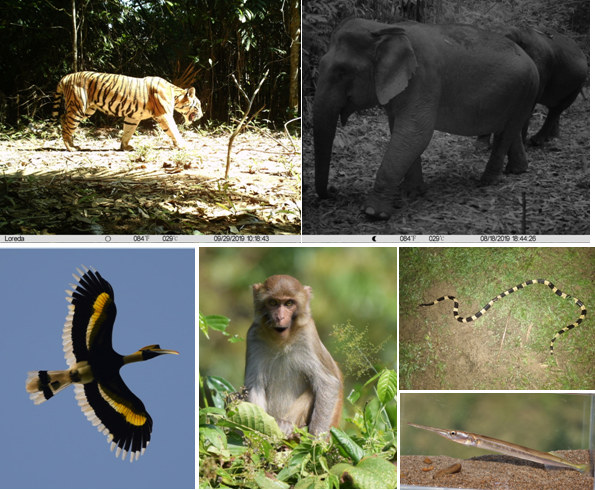Terrestrial mammal communities are key indicators of the health and sustainability of tropical ecosystems. However, few studies have been conducted to investigate the role of shared species responses in shaping community assembly, especially for identifying conservation hotspots.
In a study published in Global Ecology and Biogeography, researchers from Xishuangbanna Tropical Botanical Garden (XTBG) of the Chinese Academy of Sciences revealed that shared evolutionary history and functional traits are key drivers of community assembly in tropical ecosystems. They identified key climatic and habitat factors shaping diversity and developed a new framework by integrating species' functional traits and evolutionary relationships, to support conservation planning in the face of habitat loss and climate change.
The study was conducted over six years (2015–2021) in Upper Myanmar and Xishuangbanna, China, using an extensive network of 936 camera traps.Using a robust, nested sampling design and advanced community hierarchical models, the researchers analyzed the data across spatial and temporal scales.
Their results showed that climate and habitat factors are the primary drivers of species richness ( the number of species) in an area. However, the specific composition of these communities was jointly shaped by their functional traits and how closely related they are on the evolutionary tree.
In particular, stable temperature and precipitation patterns were key factors influencing mammal communities. Anthropogenic disturbances and forest cover loss were found to alter community structure, significantly reducing the prevalence of carnivorous traits. Large-bodied omnivores showed a preference for stable temperature niches, while sympatric carnivores were more strongly associated with intact forest cover and minimal human disturbance.
Moreover, the study successfully mapped diversity hotspots, identifying the forests of northwestern Myanmar and the transboundary region between Myanmar and China as critical areas for conservation. Diversity at each site also varied seasonally, showing that environmental filtering structures mammal communities across both space and time.
“Our findings present a more holistic picture of biodiversity,” said QUAN Ruichang. “By integrating species' traits, evolution, and abundance, we can move beyond traditional models and identify areas that are truly ecologically representative for conservation.”
The new framework which combines functional traits, phylogeny, and abundance is essential for reducing extinction risks among tropical mammals. By examining community-level responses to environmental change, rather than focusing on single indicator species, it offers a more robust basis for spatial conservation prioritization in data-deficient yet ecologically critical regions.

Animal photos captured by infrared cameras in SE Asia (Image by XTBG)
First published: 09 November 2025

